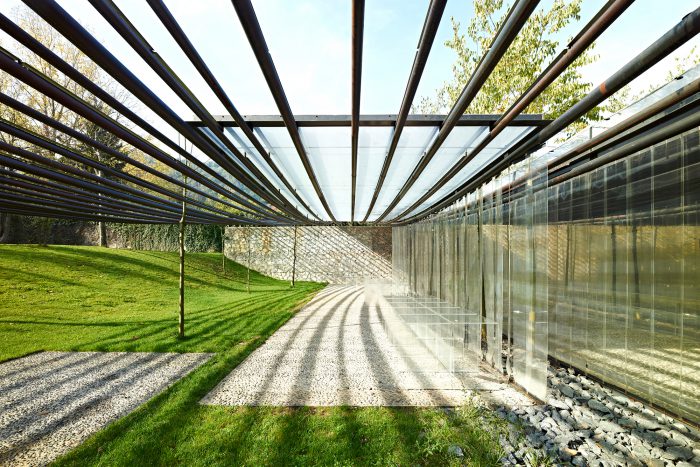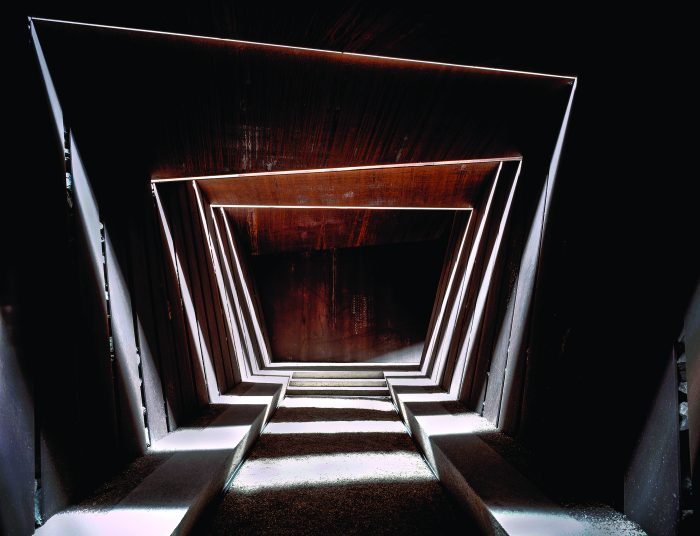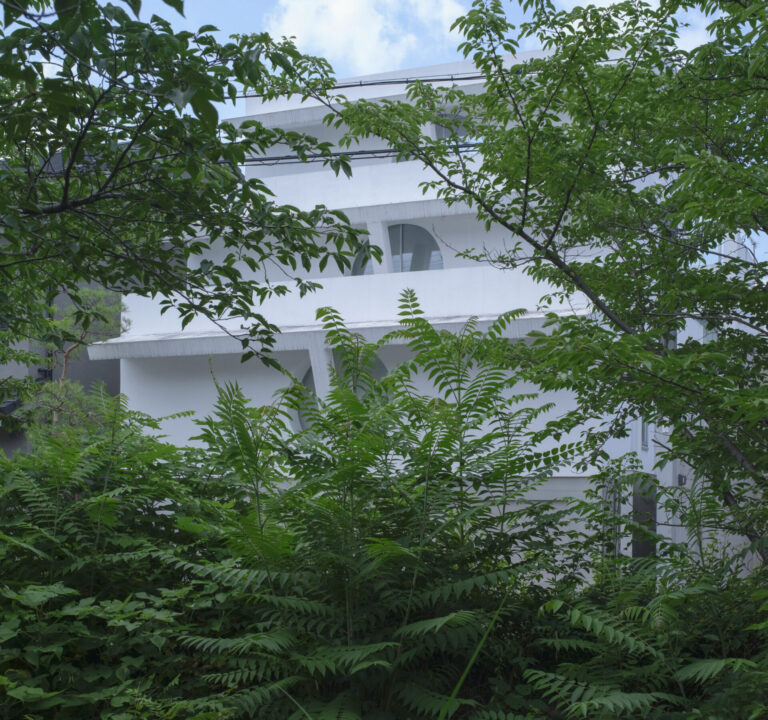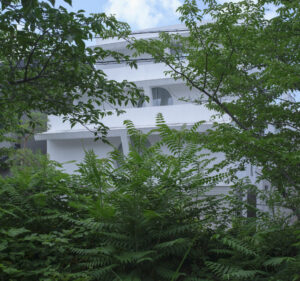
Bell-Lloc winery designed by RCR Arquitectes in Palamó, Spain.
Nestled in a volcanic zone within the mountains of northeast Spain, the town of Olot (population less than 35,000) might seem an unlikely home for three of the world’s best architects. Better known as an offbeat vacation spot than as a center for headline-grabbing building projects, the city has nevertheless provided the principals of RCR Arquitectes—Rafael Aranda, Carme Pigem and Ramon Vilalta, winners of this year’s Pritzker Architecture Prize—with all the resources they’ve needed since founding their firm there in 1988.
The prize announcement lauded RCR for their “unyielding commitment to place and its narrative, to create spaces that are in discourse with their respective contexts.” Pigem describes how her team strives to use the least amount of materials possible, employing the same material in different ways. This approach is evident in their Soulages Museum in Rodez, France, comprised of large connected blocks of weathered steel on the outside and unpainted steel plate inside. Another notable project, La Lira Theater Public Open Space, in Ripoll, Spain, replaced a demolished riverside theater with a covered multipurpose square. The weathered steel form recalls its predecessor and celebrates the town’s industrial past.

Les Cols Restaurant Marquee, 2011, Olot, Girona, Spain. Courtesy of RCR Arquitectes.
Now, RCR is building a contemporary art center on Seguin Island in southwest Paris, among other projects. Close to Shigeru Ban’s Cité Musicale center and part of a larger redevelopment that will include a cinema and a hotel, the building (scheduled for completion in 2021) will center the architects’ work in new cultural mecca.
The soft-spoken Pigem describes RCR’s alternative, collaborative approach to building a world-class practice in simple terms. “We are us and we have done it our way,” she says. Their award marks the first time that the prize jury has honored three architects at once. All three studied at the Vallès School of Architecture near Barcelona. Pigem was a year behind Aranda and Vilalta, with whom she began a romantic relationship (the couple now has two daughters). Together with Aranda, they worked on a home refurbishment in Olot after graduation. Next, they entered a national competition to build a lighthouse in the Canary Islands.
“Winning the competition gave us enough confidence to establish our firm,” says Pigem, who notes that since their careers launched simultaneously, it has allowed the partners to grow together. Now, she says, they share something “like a common language,” finishing each other’s sentences and brainstorming together in a way that might be unintelligible to outsiders.

Bell-Lloc winery in Palamó, Spain. Courtesy of RCR Arquitectes.
If you can partially attribute the trio’s success to years of dedication and collaboration, the architects also manifested precocious aptitudes and interests. When Pigem was young, she’d walk to school and pass a simple house with one dark side and one glass side that looked into a garden. She loved the architecture and decided she wanted to create something simple and meaningful as well. Aranda grew up helping his father, who worked in construction, and was drawn to building materials. Vilalta, for his part, enjoyed building huts in the forest and creating small spaces of refuge. These deeply rooted concerns for simplicity, materials and the natural landscape have defined RCR’s work ever since.










 in your life?
in your life?

